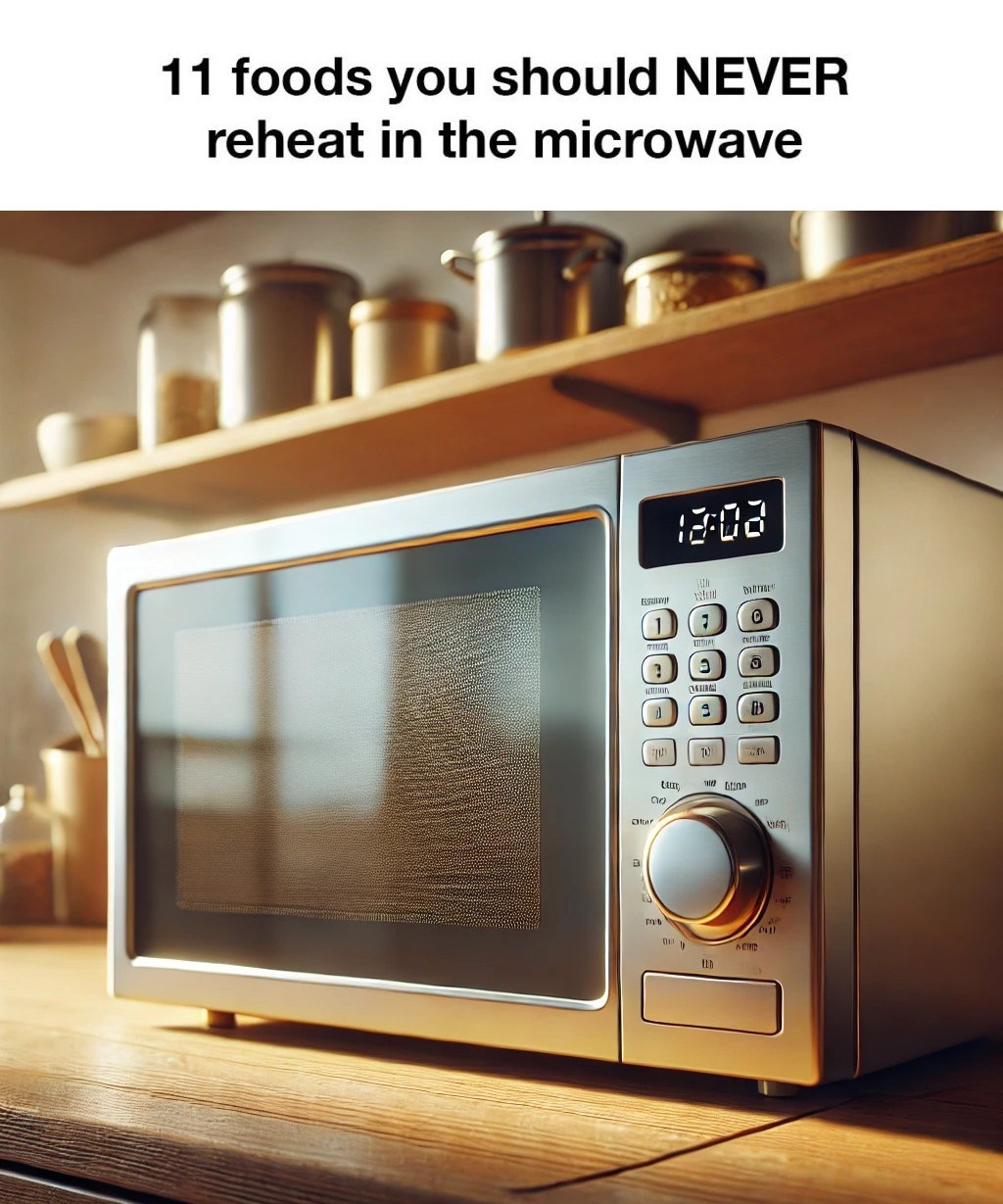ADVERTISEMENT
In today’s fast-paced world, the microwave is a staple in most kitchens due to its speed and convenience. However, not all foods should be reheated in a microwave, as doing so can lead to potential health risks, from chemical changes to bacterial growth and nutrient loss. This article outlines 11 foods that should never be reheated in a microwave, explaining the dangers involved.
Risks of Reheating Food in the Microwave
Microwaves work by emitting electromagnetic waves that cause water molecules in food to vibrate, generating heat. While this method is efficient, it can result in uneven heating and, for certain foods, chemical changes that release harmful compounds or allow bacteria to grow. Some foods may also lose essential nutrients.
Foods You Should Avoid Reheating in the Microwave
1.Chicken: Protein Breakdown Microwaving chicken can alter the way proteins break down, potentially affecting texture and digestibility. Uneven heating can also leave parts of the chicken at unsafe temperatures, increasing the risk of foodborne illness.
2.Rice: Bacterial Growth Leftover rice can harbor Bacillus cereus, a bacteria that can survive reheating. If rice is left at room temperature too long before reheating, microwaving may not destroy the bacteria completely, which can lead to food poisoning.
3.Potatoes: Toxin Production Improperly stored cooked potatoes can harbor Clostridium botulinum, a bacteria that may produce toxins. Reheating potatoes in the microwave, especially when wrapped in foil, can allow these toxins to survive, risking botulism.
4.Mushrooms: Digestive Issues Mushrooms contain proteins and nutrients that degrade quickly when reheated. This not only reduces their nutritional value but can also cause digestive issues. If you must reheat mushrooms, use a stovetop instead of a microwave.
5.Eggs: Potential Explosions Microwaving eggs can cause them to explode due to the rapid heating of water and fats inside them. The texture can also become rubbery and unappetizing, making stovetop reheating a better option.
6.Breast Milk: Nutrient Degradation
see continuation on next page
ADVERTISEMENT
ADVERTISEMENT
6.Breast Milk: Nutrient Degradation Microwaving breast milk can destroy essential nutrients and antibodies. Uneven heating may also create hot spots that can scald a baby’s mouth, so it’s safer to warm breast milk by placing the bottle in warm water.
7.Seafood: Odor and Texture Changes Reheating seafood in the microwave can make it rubbery and intensify its odor. Uneven heating can also allow bacteria to grow in some parts of the seafood, posing a food poisoning risk.
8.Processed Meats: Chemical Transformations Processed meats often contain preservatives and additives that can form harmful compounds like nitrosamines when microwaved. These compounds are carcinogenic, so it’s better to reheat processed meats in a conventional oven or on a grill.
9.Leafy Greens: Nitrate Conversion Spinach, kale, and other leafy greens contain nitrates that can convert into carcinogenic nitrosamines when reheated. To avoid this, eat leafy greens fresh or use gentle reheating methods like steaming.
10.Oils: Smoke Point and Toxic Compounds Microwaving oils like olive oil or flaxseed oil can cause them to reach their smoke points quickly, producing toxic compounds. It’s best to heat oils gently on the stovetop or use them fresh.
Safe Reheating Practices
Not all foods are microwave-friendly. To safely reheat food:
Use a food thermometer to ensure even heating.
Store leftovers properly.
ADVERTISEMENT
ADVERTISEMENT
Opt for stovetops or ovens for reheating certain foods, which helps retain nutritional value and minimizes health risks.
Conclusion
While microwaves offer incredible convenience, some foods are better left out of them. By understanding the risks and practicing safe reheating, you can enjoy your meals without compromising health or nutrition. Stay mindful of which foods to avoid microwaving, and use alternative methods for reheating to ensure food safety.
ADVERTISEMENT
ADVERTISEMENT
